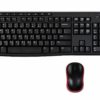In the age of digital media, the humble business card still holds court as a vital tool in the marketing and networking toolbox of any brand, professional or company. Global conglomerate CEO to local plumber– getting business cards printed and out there in circulation is all part of the job.
So, what’s the purpose of a business card? Although presented as simply a way of identifying the giver, the business card is also an invitation to contact them, a small insight into their business, an advert, a first impression and an amazing tool for creating a certain perception about both a company and the person named on the card.
1. Catch the eye with design (although sometimes that means going simpler than the competition!)
There are no hard and fast rules about business card design, but the best cards tend to be very simple or right off the other end of the scale!
The card needs to communicate the right image for the company and the person offering it. There are plenty of free online templates that can make great starting points for the likes of small business owners with little experience creating something like a business card.If you want something really unique, you could have your business cards printed on plastic making them virtually indestructible and a great talking point. Just think, potential clients will remember your meeting far more with this unique approach, than they would if your business card was one of the many business cards made from paper card that they likely get handed on a daily basis.
2. Include the right information and try to make it memorable.
The cardinal sin of all marketing tools – not including up to date information. Always make sure the information included on the card is accurate. Not sure if the office address will be the same in a year? Use a business card printing service that offers cheap small consignments and stores details online to allow for regular content updates.
3. Don’t waste the space on the back of the card.
It’s a superb spot to include messages, images and other creative bits and pieces. It also means cards can be designed to be as clutter-free as possible. Place important details on the front in a clear layout. Use the back for eye-catching graphics, a memorable quote or the motto of the company.
4. Make it multipurpose
Ever been handed a business card that doubled as a paper clip? Using a little creative thinking (and a good business card printer to bring that creativity to life!) to develop a business card design with multifunctional features can really help the card stand out from the crowd. For example, a business card with an accurate ruler printed along one edge, a business card with some pieces that pop out to make a little paper plane, business cards with different images on the back that make up a collection, a bottle opener business card, one with a calendar printed on the back or a list of memorable dates, an origami-style card that can be folded into a new shape, and so on. By making the card multifunctional, value is added.






